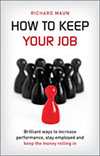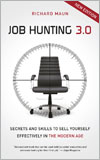better business blog
Tips and stories to add value to you and your organisation

The Dividend Trap
Life is full of surprises, like the fact hipster beards and top-knots remain stubbornly en vogue, despite making some men look ridiculous.
Obviously I shall declare that my tiny 80s pigtail was absolutely correct and manly and of course was fully approved by my thoughtful parents (they hated it). It was also on the banned list at school, along with white socks and pop star badges.
However, us fashionistas simply tucked our New Romantic pigtails into our shirt collars, hid white socks under black ones and pinned our badges to the inside of our lapels and fought the fashion fight guerrilla style.
So, perhaps life really isn’t surprising after all, when we think about it. It’s just life, with its many little wrinkles, designed to make us stop and think sometimes.
Business is the same. Fashions have changed; my paisley ties are no longer required and the briefcase has been usurped by the backpack.
What hasn’t changed is the need to think carefully about tax planning and herein lies a thoughtful story for us to ponder on.
Running a limited company means paying ourselves in basic pay and dividends. We can balance the two to be tax efficient and of course we need to leave funds in the business for a rainy day. We are not allowed to pay ourselves more in accumulated profits than we have earned, even if we have a strong future order book.
This is all very sensible, right up to the point when we apply for a new mortgage. Then we can happily switch off reality and journey down into madness.
I will keep the following numbers simple, to make the point in a general way.
If we have a PAYE salary of £30k a lender will happily loan us up to 4x earnings, equal to a handsome £120k. However, if our business pay and dividends equal £20k they will still loan us 4x earnings, generating a paltry £80k.
Although this business pay is equal to a £30k salary the lenders don’t treat them as the same risk and in effect penalise small business owners. I discovered this recently and was shocked that despite running my own business profitably for 14 years that timescale also counted for nothing.
Had I folded the business and found myself a £30k job they would have been happy to lend more.
Madness? I think so, but I don’t get to make the rules here.
The dividend trap is that in running my business efficiently I can borrow less than a PAYE person, even though we both take home the same amount of cash.
To add further insult here, retained profits are not mine either …they belong to the business. Even though I own the business and hence the cash in it, lenders are often unwilling to recognise this.
The catch for small business people is that they need to take less money out of the business when wanting to be tax efficient and take more money out of the business when needing a mortgage.
Lenders need at least two years of accounts too, so if we want a higher mortgage loan we need to plan for it two years ahead.
Even if we have the cash to pay a higher loan, the lenders will tend to go by our tax returns, which can put small business owners at a disadvantage.
If this all sounds unfair, well …it is.
So, it you want to avoid the dividend trap think about where your life could be in two years time and plan ahead.
Taking a minimum dividend now might be tax efficient, but in the future it could turn out to be highly mortgage-inefficient.
If you run a limited company then maybe it’s time to talk to a tax advisor and a mortgage broker and find out what you need to do for a happy future.
As for me, I’m going to find some white socks and smash the system quietly. I think it’s too late hair-wise for another pigtail though!
Next week: Learning vs Content
e-publishing
Click icon for details


recent posts
browse archive
books
Click cover to view details on Amazon

How to Keep Your Job
Brilliant ways to increase performance, stay employed and keep the money rolling in
Published 2011 Marshall Cavendish
208pp

Job Hunting 3.0
Secrets and skills to sell yourself effectively in the Modern Age
Published 2010 Marshall Cavendish
260pp

 RSS
RSS


